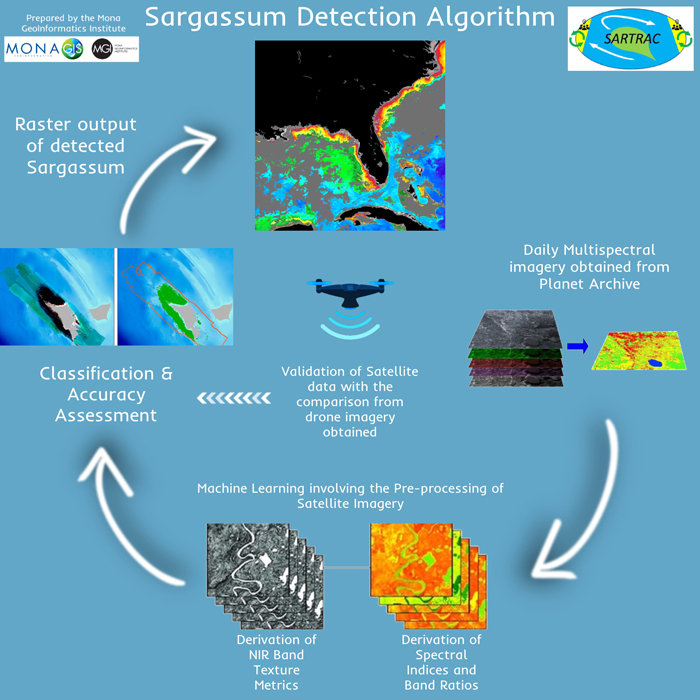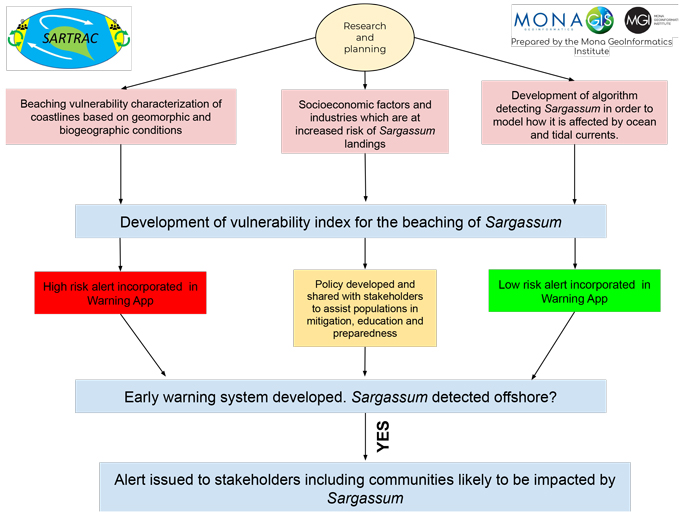
This work package aims to co-develop a Sargassummonitoring and dissemination system with stakeholders, providing information on Sargassumstrandings to create transformational adaptation opportunities for impacted communities. While monitoring systems have been implemented to detect strandings of Sargassum,finer-scale prediction tools are needed in forecasting to know where stranding will occur. This is particularly important in areas where there is major exposure to tourism, shipping, recreational and fisheries industries.
 The first focus of Work Package Two is to develop an operational and near real-time monitoring and dissemination system. Using satellite and drone imagery, an improved algorithm for the detection of Sargassumstranding events will be created to inform the development of an early-warning system for the Caribbean, and a prototype early-warning system for Ghana.
The first focus of Work Package Two is to develop an operational and near real-time monitoring and dissemination system. Using satellite and drone imagery, an improved algorithm for the detection of Sargassumstranding events will be created to inform the development of an early-warning system for the Caribbean, and a prototype early-warning system for Ghana.
The second focus of Work Package 2 is to evaluate the socio-economic and physical impacts of stranding events on coastal communities and livelihoods. This evaluation will contribute to the co-development of a risk management strategy to build equitable resilience for Sargassum-affected communities.
Work Package 2 contains six tasks relating to the monitoring and dissemination of a Sargassumearly-warning system:
- Detection of stranding events;
- Early-warning system development and dissemination;
- Understanding the physical and social distribution of stranding events;
- Framework to assess resilience to future stranding events;
- Co-development of a risk management strategy;
- Training and transfer of early-warning system to Ghana.

This work package therefore contributes to detection and management of Sargassumstranding events, by improving remote detection of Sargassumand co-developing warning and management systems.

